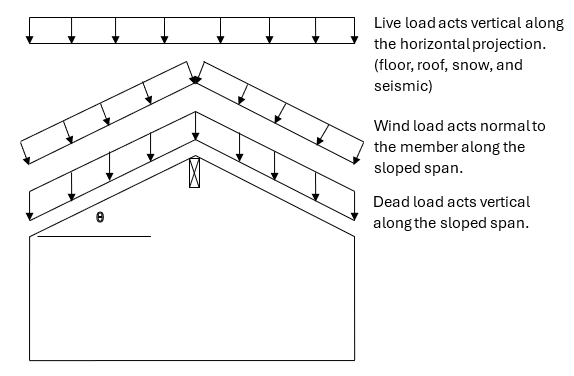Understanding Load Input Type Options
Uniform loads
Uniform distributed loads are those loads whose magnitude is the same regardless of location. A uniform load acts on either:
- A surface area: The load will be a force spread over a square area and measured as a force per units of squared length.
- A line: The load will be a force per units of length.
Other loads
Some distributed loads are tapered, where the starting and ending magnitudes do not match.
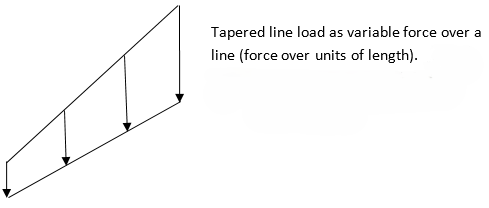
The primary difference between an area distributed load and a line load is that an area distributed load is spacing-sensitive and is adjusted by either the on-center spacing (member type joist) or by the tributary width (member type flush or drop beam). Line loads are not adjusted for spacing or tributary width. So, if a joist is carrying a line load, the magnitude of this line load is not affected by the on-center spacing of the joist.
Concentrated loads
A concentrated load acts on a single point and it has units of pounds force. Reactions from posts are modeled as point loads on members supporting them. In reality, a point load with zero contact surfaces doesn't exist. A 2 x 4 stud transfers its vertical load through a 1.5" x 3.5" contact area, but for load modeling purposes, the load acts at a single point, usually the center of the stud's cross section. It is an industry standard to locate point loads from walls or posts above at the end a member at the end of that member; there is no need, for example, to place a point load from a 2 x 4 wall at the tip of a left cantilever 1 ¾" from the start of the member. Instead, place point at the start of the member where location is zero. You should place point loads anywhere else on the span at the centerline of the post or wall that originated those loads.
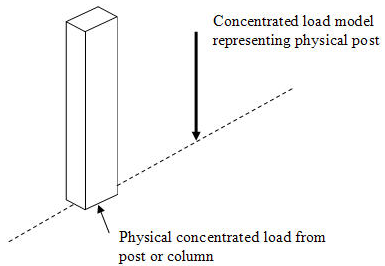
There are two point load options regarding units, one is in units of force and the other is in units of force per units of length. The above figure illustrates a point load in lbs. The figure below illustrates a point load in units of force per units of length.
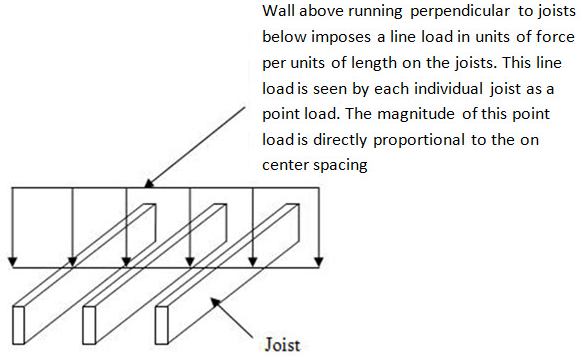
A point load in units of force is not adjusted for on-center spacing or tributary width. A point load in units of force per units of length is adjusted by joist on center spacing or tributary width.
Lateral Wind Load
All 3 wall member types accept lateral wind load:
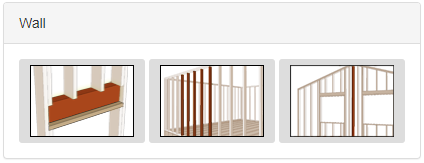
For NBCC, the Wind Sill member type also requires wind loading.
Wind Load Calculations for ASCE/SEI 7-05
Wind Load Calculations for ASCE/SEI 7-10
Wind Load Calculations for ASCE/SEI 7-16
If the ASCE calculation is used, note that individual members may be designed using different wind loads. This is because two (2) of the parameters that determine the magnitude of the design wind pressure are the member’s height and wind tributary width:
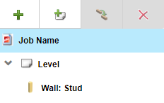
|
At the Job Level (Wind Loading tab): Enter the wind parameters that apply to the entire structure:
|
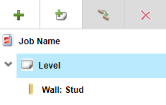
|
At the Level level: Enter the wind parameters that may apply to an individual elevation of the structure:
|
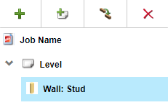
|
At the Member level: Enter the wind parameters that are based on the geometry of the member itself:
Your lateral deflection criteria is also entered on the Member Info. tab. |
Wind Load Calculations for NBCC
If the NBC of Canada calculation is used, note that individual members may be designed using different wind loads. This is because two (2) of the six (6) parameters that determine the magnitude of the design wind pressure are the member’s height and wind tributary width:
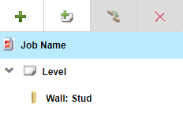
|
At the Job level (Wind Loading tab): Select location to determine the wind velocity pressure parameter that applies to the entire structure:
|
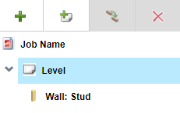
|
At the Level level: Enter the 3 wind parameters that may apply to an individual elevation of the structure:
|
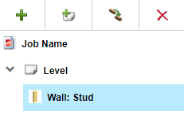
|
At the Member level: Enter the 2 wind parameters that are based on the geometry of the member itself:
Your lateral deflection criteria is also entered on the Member Info. tab. |
Entering your own Wind Loads
To bypass the wind load calculator and enter your own wind loads, go to the Job Level and check the box for "Do not apply..." on the Wind Loading tab.

Wind Loading Direction
Wind loading is treated separately than all other load types. The wind loading is assumed normal to the member along the sloped length. This facilitates the user input, as the wind load would have been calculated as per ASCE 7 or NBCC, which would result in a pressure normal to the member. This only applies to non-point loads, point loads are treated in the vertical direction always.
